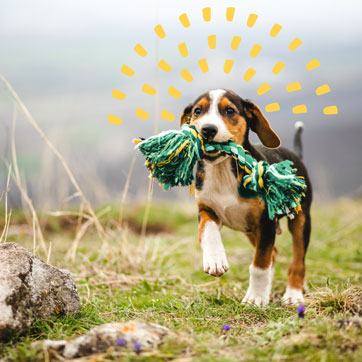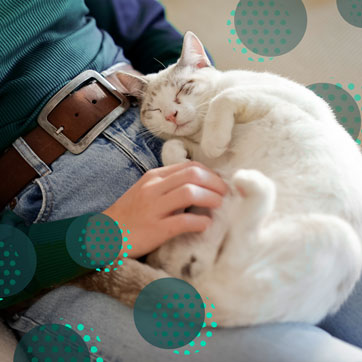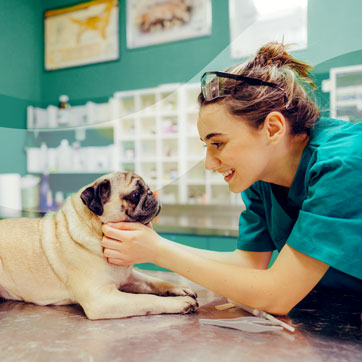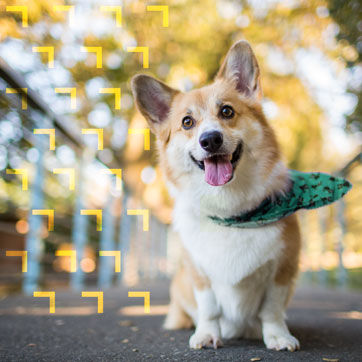The True Cost of Pet Ownership
August 12, 2021 • 14 minute read
The True Cost of Pet Ownership
Now that you have a place of your own, you may be thinking about getting a pet. Puppies and kittens are adorable, lovable creatures. It makes perfect sense to want to share your new pad with one. However, it’s important to temper that temptation with a hefty dose of financial reality before you take the plunge. Think it’s all lip service? Think again. In 2019, Americans spent more than $75 billion on their pets.
The last thing you want is to invest your time, attention and love in a pet you cannot truly afford. The costs of pet ownership run much deeper than what you pay to bring the pet home. The first year of pet ownership alone can be extremely costly. Unfortunately, the costs can go up even more as your pet ages. Here’s what you need to know about the true cost of owning a pet.
Adoption fees vs. purchasing through a breeder

In Seattle, the adoption fees for pets can run anywhere from $35 for a senior cat to $375 for a puppy under the age of six months. If you go to a professional breeder for a specific breed or a pet shop for a pure-bred puppy or kitten, you're likely to pay much more to purchase your pet. That doesn’t include a single penny toward the expenses that go along with owning a pet. When compared with fees from reputable breeders, adoption fees for puppies and kittens are bargains.
Things such as vaccinations, spaying or neutering, microchipping, worming, etc. are often already covered when you adopt a pet as part of the adoption fees. However, when you purchase a pet from a breeder, you may be responsible for these expenses on your own or required to pay them in addition to the cost of the animal itself.
Be aware there are puppy mills out there. Although Washington state has laws designed to make puppy mills difficult to operate, some people use unscrupulous practices when breeding puppies for sale. These puppies are often available at lower costs than reputable breeders charge. Unfortunately, these puppies don’t have the pedigree or undergo the testing for genetic illnesses and conditions that reputable breeders put their pets through.
Take caution when comparing prices and avoid puppy mill pets that could have higher-than-average healthcare costs throughout their entire lives as a result of how they were bred.
Pet gear and supplies

Before you bring your new pet home, you’ll need to puppy- or kitten-proof your home. This usually doesn’t cost much but does require a fair amount of time. That is, unless you want to replace all your electrical cords, buy new toilet paper supplies and replace all your shoes in the first few months. You’ll want to make sure those things are not easily accessible to your pet and that you have other items available that are safe for chewing, scratching, etc.
Supplies for your pet will vary according to the type of pet you choose, the space you have available, and how much you’re willing and able to spend on your pet.
Dog gear you might like to have
- Food bowl
- Water bowl
- Crate (if you’re crate training)
- Bed
- Toys (start with a variety of types of toys until you know your dog’s preferences)
- Collar
- Leash
- Harness
Apart from the gear you need to purchase for your puppy, another essential expense is puppy training. Group classes are widely available and may cost anywhere from $40 to well over $100.
However, puppy training classes are worth every penny you pay for your dog to fully understand and always obey one single command: “leave it.” This command alone can help prevent thousands of dollars in veterinary bills by getting your dog to instantly drop items that might be harmful if swallowed. It can also save you hundreds of dollars you would otherwise spend replacing items your dog’s powerful jaws can easily destroy.
You might also consider dog park membership fees as an essential expense for a dog. Routine visits to play and run with other dogs can help yours get rid of excess energy and be calmer when you’re trying to relax or sleep.
Cat gear you might need
While some cat expenses are identical to expenses common with dogs, others are unique to cats:
- Food bowl
- Water bowl
- Cat carrier
- Bed
- Scratching post
- Toys
- Collar (a bell on a collar can help you locate your kitten when it’s hiding)
- Litter box
- Kitty litter
Whether you choose a cat or a dog, associated pet gear and supplies can add up quickly and hit you hard, especially during the first year as you’re learning your pet’s likes, dislikes and preferences. Keep in mind your pet may grow quickly in this first year and may require multiple sizes of collars, harnesses, pet beds, etc.
Don’t forget to account for additional cleaning costs related to pet accidents, spills and disasters that may occur along the way. You might want to consider starting a savings account dedicated to pet emergencies and expenses. If you transfer $35 to $50 per month to that account, you can save a fair amount of money for your pet’s needs over the course of the next few years.
Pet food
Depending on the quality of the food you buy your pet and where you purchase it, you might be shocked at the amount of money you spend on pet food in a year.
There’s a pet food for all personality types. Owners who prefer to pamper their pets can buy specialty foods. Other foods are better suited for specific nutritional needs and budgets. Regardless of the food you choose, it’s best to serve your pet a consistent diet, so try to stick to one brand. Make sure you choose a brand that works with your budget and the voraciousness of your pet’s appetite.
Veterinary fees
The first year of your pet’s life is critical for setting a foundation of health and wellness. Your pet will need frequent monitoring to make sure it isn’t growing too quickly, gaining too much weight, experiencing failure to thrive, or displaying signs and symptoms of various genetic conditions. Common veterinary expenses within the first year of your pet’s life include:
- Well-pet visits (usually 2-3 visits within the first year to monitor your pet's progress)
- Preventive treatments and medications for things such as heartworms, fleas, ticks, etc.
- Vaccinations to prevent specific conditions and illnesses
- Microchipping, which allows your pet to be returned to you if it gets lost or goes missing
- Spaying or neutering to prevent unwanted puppies or kittens
- Dental care and hygiene to keep your pet healthy
These are the typical run-of-the-mill veterinary care requirements of all pets, especially in the first year. They do not include the costs or expenses of emergency visits, illnesses, accidents, etc.
Unexpected medical expenses for your pet
Pet insurance is one of the most important financial decisions you can make if you decide to bring a pet into your home. Pet insurance costs range widely depending on coverage, but can save you thousands of dollars the first time you use it. Every pet owner is likely to require some type of emergency care for their pet at some point in the pet’s life.

Your job is to make sure the pet insurance plan you purchase is the one that serves your needs best. Compare options and see which one works best for you and your budget.
Rent expenses related to pets
If you rent a house or apartment, you need permission from your landlord to have a pet on the property. Many rental unit owners require a hefty pet deposit before they allow you to bring a pet onto the premises. This deposit covers the costs to clean and repair any damage the pet may cause. If your pet does not damage the property, your deposit may be returned to you.
Some landlords charge pet rent in addition to the deposit. Pet rent can be as little as $25 per month but may be as much as $50 a month. This is an ongoing amount you pay along with your monthly rent and is not refundable. It may not seem like much in bits and pieces, but over the course of a year it adds up to hundreds of dollars.
Incidental pet expenses
Other expenses you might not think of go along with owning a pet as well. Here are some examples:
Licensing
Licensing pets is important. King County charges different fees according to your specific situation, penalties for failing to license your pet and late fees if you don’t renew your pet's license by the expiration date. If you pay your annual licensing fee on time, the fee is somewhat nominal at $60 for an unaltered pet and $30 for a pet that’s spayed or neutered.
Different counties throughout the state have their own policies, but this is something to keep in mind when considering the cost of pet ownership.
Grooming
Cats and dogs both require some degree of grooming. For some breeds, the grooming is simple enough that the average pet owner can manage. However, other breeds need specific fur trim styles, ear care and even nail care that requires professional grooming services.
Some pets don’t tolerate grooming as well as others and require specialized equipment — to hold them in place, for instance — in order to fully groom them. This specialized equipment can cost more than typical grooming expenses.
For some breeds, grooming costs can border on outrageous. On average, you can expect to pay between $30 and $90 for each visit to the groomer. The frequency of these visits will vary from one pet to the next. Some pets require more frequent grooming than others.
Boarding

Boarding is sometimes necessary when you own a pet. There may be times you need to go out of town and need to board your pet for a single night. Other times, your pet may require a longer stay. It’s a good idea to develop a relationship with a specific pet boarding company so that your pet is at least familiar with the arrangement before you leave your pet for an extended period.
Boarding rates vary from one organization to the next, but you can generally expect to pay between $50 and $75 per night when boarding your pet.
Vitamins and supplements
Although not all pets need vitamins and supplements, some dog and cat breeds are susceptible to certain skin conditions, allergy issues, joint problems, etc. In that case, they may require regular doses of vitamins and supplements to keep them healthy. These are ongoing expenses that typically last the life of the pet.
Pet ownership is a beautiful thing that can bring joy to your life. Just keep in mind the expenses involved before you dive into owning a pet.
Ready to start saving for pet expenses?
Ready to start saving for pet expenses?
It's never been easier to open a savings account at WSECU.
